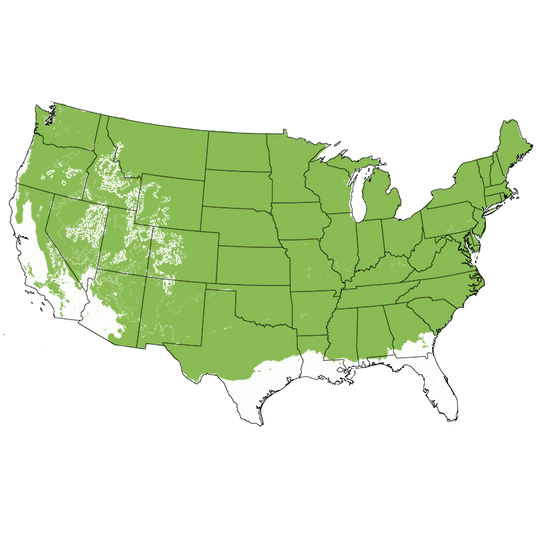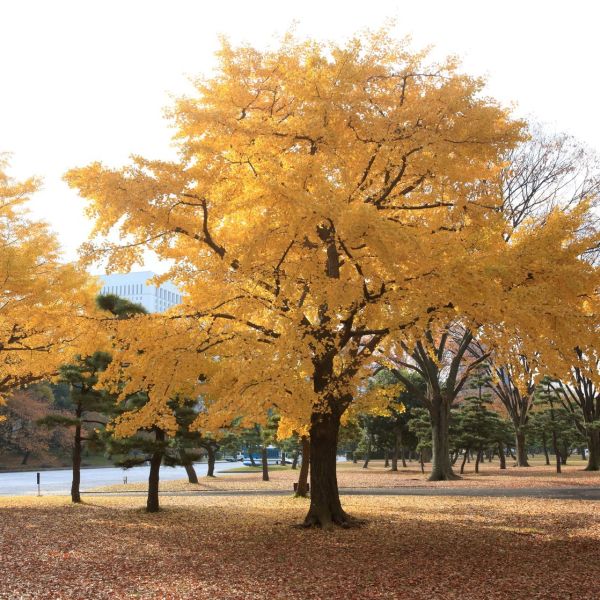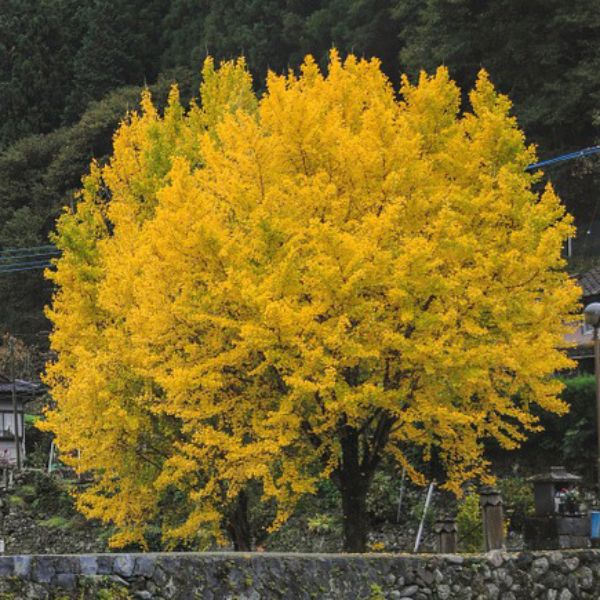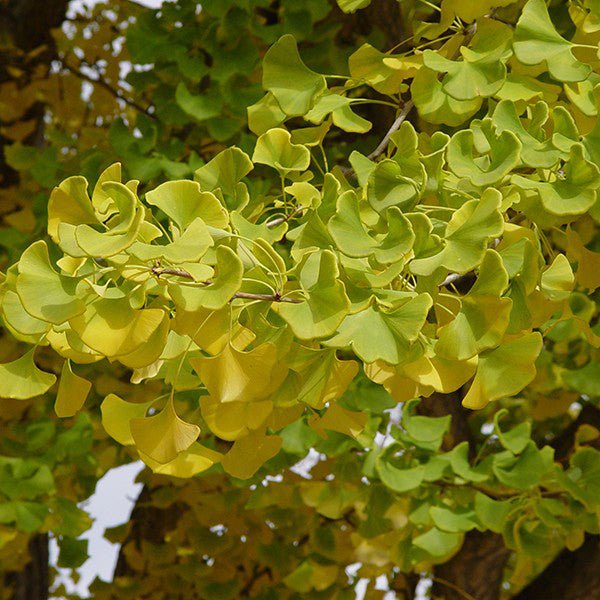Ginkgo biloba
Ginkgo biloba
Plant Sentry™
Plant Sentry™

Plant Sentry™ Protected
Your order is protected by our compliance system that:
- Prevents restricted plants from shipping to your state
- Ensures plants meet your state's agricultural requirements
- Protects gardens from invasive pests and diseases
Delivery and Shipping
Delivery and Shipping
Delivery and Shipping
Fast, Safe Plant Delivery
Ships in 3-4 business days • Tracking provided • Weather protected
| Under $50 | $9.99 |
| $50 - $99.99 | $14.99 |
| $100 - $149.99 | $16.99 |
| $150 - $198.99 | $24.99 |
| $199+ | FREE |
✓ Zone-specific timing • ✓ Professional packaging • ✓ Health guarantee
Understanding Plant Options
Nature Hills offers plants in two main formats:
- Container Plants: Grown in pots with soil, sized by container volume and plant age
- Bare Root Plants: Dormant plants without soil, sized by height measurements
Container Plant Sizes
Container sizes indicate plant age and growing capacity rather than liquid volume equivalents. Our containers follow industry-standard nursery "trade gallon" specifications, which differ from standard liquid gallon measurements.
Young Plants (6 months to 18 months old)
| Container Size | Actual Volume | Metric Equivalent |
|---|---|---|
| 2" x 2" x 3" | 0.18 - 0.21 dry quarts | 0.20 - 0.23 dry liters |
| 4" Container | 0.31 - 0.87 dry quarts | 0.35 - 0.96 dry liters |
| 4.5" Container | 0.65 dry quarts | 0.72 dry liters |
| 6" Container | 1.4 dry quarts | 1.59 dry liters |
| 1 Quart | 1 dry quart | 1.1 dry liters |
| 5.5" Container | 1.89 dry quarts | 2.08 dry liters |
Established Plants (18 months to 2.5 years old)
| Container Size | Actual Volume | Metric Equivalent |
|---|---|---|
| 2 Quart | 2 dry quarts | 2.2 dry liters |
| #1 Container | 2.26 - 3.73 dry quarts | 2.49 - 4.11 dry liters |
| 5" x 5" x 12" | 3.5 - 4.3 dry quarts | 3.85 - 4.74 dry liters |
Mature Plants (2-4 years old)
| Container Size | Actual Volume | Metric Equivalent |
|---|---|---|
| #2 Container | 1.19 - 1.76 dry gallons | 5.24 - 7.75 dry liters |
| #3 Container | 2.15 - 2.76 dry gallons | 8.14 - 12.16 dry liters |
Large Plants (3-5 years old)
| Container Size | Actual Volume | Metric Equivalent |
|---|---|---|
| #5 Container | 2.92 - 4.62 dry gallons | 12.86 - 20.35 dry liters |
| #6 Container | 5.25 - 6.01 dry gallons | 23.12 - 26.42 dry liters |
| #7 Container | 5.98 - 6.53 dry gallons | 26.34 - 28.76 dry liters |
Bare Root Plants
Bare root plants are sold by height from the root system to the top of the plant. Plants may exceed minimum height requirements.
Common Sizes:
- Trees: 1 foot, 2 feet, 3 feet, 4 feet, 5 feet, 6 feet
- Shrubs & Perennials: 1 foot, 18 inches, 2 feet
Important Notes
Container Volume Specifications
- Trade Gallon Standard: Our containers follow industry-standard "trade gallon" specifications established by the American National Standards Institute (ANSI Z60.1) for nursery stock
- Volume Variations: Actual soil volume may vary due to plant root systems and growing medium settlement
- Age Indicators: Container size primarily indicates plant age and maturity rather than liquid volume equivalents
Growing Conditions
- Plant size can vary based on variety and growing conditions
- Container size helps indicate plant maturity and establishment level
- Larger containers generally mean more established root systems and faster landscape establishment
Seasonal Availability
- Bare root plants are available seasonally when dormant
- Container plants are available throughout the growing season
- Specific varieties may have limited availability in certain sizes
Questions?
For questions about specific plant sizes or availability, please contact our plant experts who can help you choose the right size for your landscape needs.

Plant Sentry™ Protected
Your order is protected by our compliance system that:
- Prevents restricted plants from shipping to your state
- Ensures plants meet your state's agricultural requirements
- Protects gardens from invasive pests and diseases
Plant Profile & Growing Essentials
Cold hardy, Fall Color/Interest, Drought resistant, Salt Tolerant, Clay Tolerant, Disease resistant, Thornless, and Low Maintenance
Specifications
Specifications
-
Botanical Name
-
Height
-
Width
-
Growing Zones
-
Sunlight
-
Growth RateModerate
-
Flower Color
-
Leaf Color
-
Fall Color
-
Pollinator Required
-
Bloom PeriodEarly Spring, Late Spring
Planting & Care Instructions
Planting & Care Instructions
Lovely fall color, the ancient and indestructible Ginkgo tree (Ginkgo biloba) is also called the Maidenhair tree because it resembles Maidenhair ferns. It is truly unique and has no close living relatives. It's also one of the oldest living types of trees. Botanical gardens around the world feature this beautiful living fossil. You'll be proud to own one!
Yes, this is the tree used in Ginkgo biloba supplements to improve memory, symptoms of dementia, and blood flow. Specimens are reported to exist around China that are over 1800 years old. Bet you didn't know how pretty it is!
The leaves on the Ginkgo are an interesting fan shape that flutters in the slightest breeze. They are dark green leaves from spring to summer, often 2-4 inches but can sometimes be up to 6 inches long! Once established, the Ginkgo requires little maintenance or pruning. Typically it has a lovely canopy that grows with perfect balance.
In autumn, the beautiful leaves turn a brilliant, saturated yellow. This is one of the most favored and popular characteristics of the Ginkgo tree. They simply glow in the landscape and make a heart-catching addition to the season that local wildlife and birds will love!
When those leaves turn a brilliant and clear yellow, you will find that the Ginkgo leaves may all fall in one very short period of a day or two. It's a marvelous display as the leaves blanket the ground beneath almost overnight. That also makes lawn cleanup easy!
These are rugged trees! They'll be perfect in hot, dry climates, and tolerate urban air pollution. Growing slowly and steadily, Ginkgo are here for the long-term game not the here and now. Eventually reaching a hefty 80 feet in height and 40-foot width in optimal conditions! Hardy in cold and heat throughout the USDA growing zones 3 to 8. Ginkgo trees have incredible environmental adaptability with good tolerance to poor urban conditions and no insect or disease pressure.
Planting and Application:
The Ginkgo has long been appreciated for its well-behaved root system. This is a great tree for use around walkways and patios because the roots stay deep and are not prone to lift pavement. This is why the tree has become a very popular street tree!
Place it where you'll see the fall foliage color display! This gorgeous deciduous tree is perfect as a shade tree, or lawn tree. Pair the yellow leaves with the fiery reds of the Autumn Blaze Maple tree for vibrant autumn colors!
Ginkgo trees tolerate a very wide range of conditions and are simply not bothered by insect or disease problems. Use them in your shelterbelts and windbreaks to add some diversity to the barrier. They tolerate open windy areas well.
Use them as you would an Oak tree for longevity and color, or pair them with fiery Autumn Blaze Maple Trees or other yellow cold-hardy trees like Quaking Aspen or even plant them among conifers without worrying the pH will affect them. Create a gorgeous windbreak with a collection of fast and slow-growing trees that light up your fall landscape!
Of course, Bonsai enthusiasts should consider these real-deal trees for their collection.
- Unique Soft-Green Fan-Shaped Leaves
- Tiny Green Flower Color
- Beautiful Golden Yellow Fall Color
- Showy Display as Leaves Fall to the Ground
- Fascinating Historical Tree
- Mighty Specimens, Shade, Street & Fall Color Trees
#ProPlantTips for Care:
Ginkgo are easy to grow but tend to be slow to establish. But once they get going, they will be there for the rest of your life, your children's life, and even your great-grandchildren's life! It will perform best in full sun, so site it carefully. The Ginkgo Tree can live 1,000 or more years. This native to China has been around since the dinosaurs and is as beautiful as it is beneficial.
Provide a well-drained enriched site and water new trees regularly using the Finger Test method for best results. A 3-4 inch thick layer of mulch all around the tree's drip line helps make cleaning fruit drop easier and create a pretty garden bed. If pruning is needed, do so while the tree is dormant in the winter or very early spring.
These trees are either male trees or female trees, and female Ginkgos will have Ginkgo seeds with edible nutlets inside the fruit.
- Full Sun
- Well-Drained Conditions But Highly Adaptable
- Moderate Moisture Needs
- Prune When Dormant
- Male or Female Tree - Female Trees Fruit Around 8-10 Years of Age
- Resistant to Pests, Disease, Pollution & Wind
Tough, strong, and very resilient … that is a Ginkgo! For a conversation starter that would be an interesting - and useful - addition to any yard - Order your own mighty Ginkgo biloba trees today!
Frequently Asked Questions
What is special about Ginkgo Biloba Trees? Is Ginkgo biloba a good tree to plant?
These are incredible fall color trees, lighting up autumn in vivid yellow hues! These are very long-lived trees, with some specimens still around after 1,800 years! Ginkgo makes fall clean-up easy because these vibrant trees seem to drop all their foliage at once. Ginkgo trees are fantastic trees for their fall color, easy carefree nature and hardiness. They're low maintenance and have lovely leaves, unlike any other tree!
Where do Ginkgo trees grow best?
Ginkgo trees love full-sun locations, the more the better! They thrive in a wide USDA growing zone range of 3 through 8. Provide a location with good drainage, and their root balls don't seem to mind what soil type and are drought tolerant once established.
Do Ginkgo biloba trees grow fast?
Ginkgo biloba are medium growers at first and once established become slow-growth rate plants because they are in it for the long haul! Living for hundreds of years, so they're in no hurry to out-compete other trees. It may take two seasons for your newly planted Ginkgo to start to feel at home in its new site. But once it gets established, it will then start to put on a normal amount of growth. Patience my friend...they are so worth the wait!
What Shipping Options Do You Offer?
NatureHills.com works closely with our growers and nursery professionals to ensure we ship when it is most appropriate for your area. Our goal is to deliver the hardiest plants by avoiding extreme high and low temperatures. Check out our shipping schedule for more information and to learn our wills and won'ts when it comes to shipping plants. Find your Ginkgo biloba for sale here at NatureHills.com!
Incredible Living Fossil Ginkgo Trees
These are the only remaining variety of ancient plants that once were abundant on the earth over 150 to 270 million years ago.
The Gingko is a botanical wonder in that it is a bridge plant between broad leafed plants and evergreen conifers. Because of the way the seed is developed it is considered closer related to an evergreen conifer in its morphology.
A native to China and thought to be extinct for centuries, it is now known to grow in two remote small areas in China's Zhejiang province. The Gingko's sole existence is credited to the Chinese monks who for 1000's of year planted and preserved the trees because of the plants wide range of usages.















